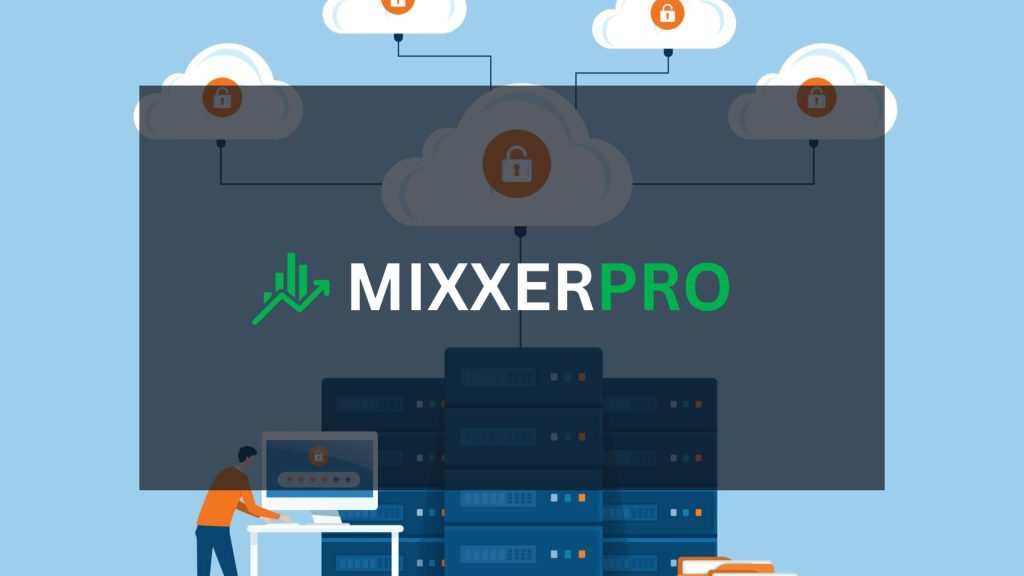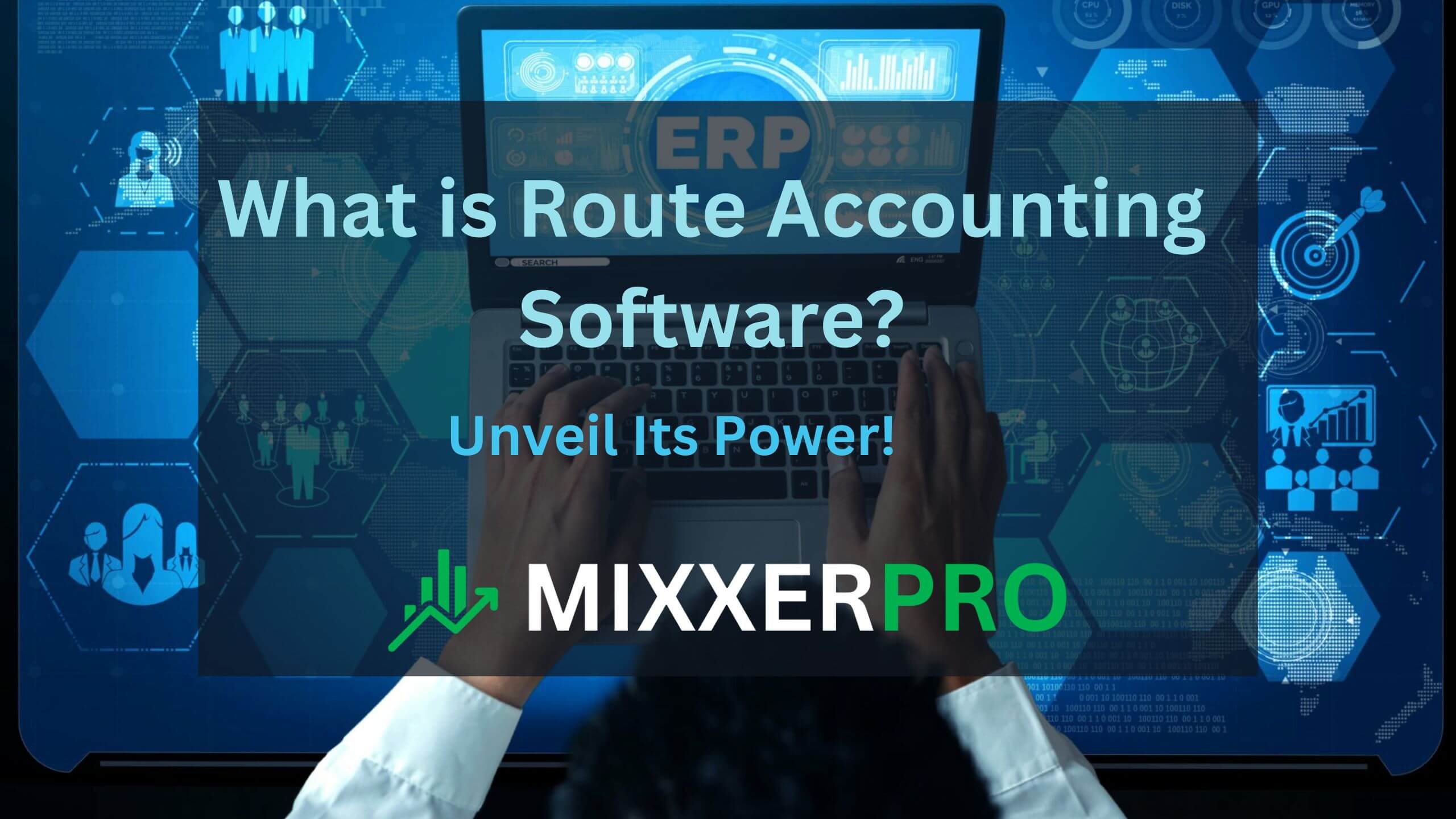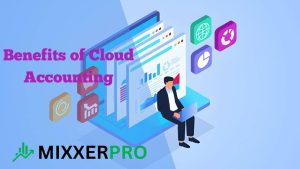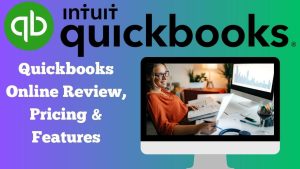what is route accounting software?
Route Accounting Software is a specialized tool for managing delivery and sales operations for mobile teams. It optimizes routes, tracks inventory, and processes transactions in the field.
Route Accounting Software streamlines distribution tasks, ensuring that driver-salespersons can manage sales, delivery, invoicing, and inventory control directly from their vehicles. This software is crucial for businesses that rely on accurate, real-time data to make informed decisions on the go.
It enhances productivity by automating routine tasks, thus enabling businesses to focus on growth and customer service. The integration of GPS tracking, route optimization, and customer data management makes it an indispensable tool for businesses with a mobile workforce. With its ability to provide detailed reports and analytics, Route Accounting Software offers insights into sales trends and delivery efficiency, which can drive strategic business enhancements.
Table of Contents
Introduction To Route Accounting Software
Introduction to Route Accounting Software is your gateway to optimizing the complex distribution and delivery operations that businesses face every day. Ever wondered how your favorite products make it to the local store shelf just in time? Or how delivery services ensure that packages find the most efficient paths to your doorstep? The answer lies in the sophisticated yet user-friendly realm of Route Accounting Software (RAS). This integral technology forms the nervous system of logistics, providing essential data and automation from warehouse to delivery. Let’s delve into the definition, key features, and impact of route accounting systems on modern businesses.
Definition And Key Features
Route Accounting Software is tailored to manage the intricacies of the delivery and distribution of products. This specialized software tracks inventory, monitors sales, manages customer information, and optimally organizes delivery routes. Not only does it help in logistics, but it also encompasses a range of features that are crucial for businesses that operate on the go. Key features of route accounting software include:
- Inventory Management: Accurate tracking of stock levels and product locations.
- Sales Tracking: Recording and analyzing sales data and customer purchase history.
- Order Processing: Automating the order-to-cash process, from order receipt to delivery.
- Route Optimization: Using algorithms to find the most efficient delivery paths.
- GPS Tracking: Real-time tracking of delivery vehicles for improved accountability.
- Customer Relationship Management: A central repository for customer data, enabling personalized service.
Evolution Of Route Accounting Systems
Route Accounting Systems have come a long way from their early incarnations. The transformation began with simple ledger books and has now progressed to sophisticated software that integrates with mobile devices and real-time data analytics. This evolution can be summarized in a timeline highlighting critical developmental milestones:
| Year | Milestone |
| Pre-1980s | Manual record-keeping and route planning. |
| 1980s-1990s | Introduction of basic digital systems and handheld devices for data recording. |
| 2000s | Expansion of internet connectivity leading to cloud-based solutions. |
| 2010s-Present | Implementation of AI and machine learning for predictive analytics and advanced route optimization. |
The Role Of Route Accounting Software In Modern Businesses
The integration of Route Accounting Software is no longer a luxury, but a necessity in the contemporary business landscape. Such software is the driving force behind complex logistical operations, enabling companies to stay competitive and customer-oriented. The software’s role in modern businesses spans several vital functions:
- Maximizing Efficiency: It streamlines operations to save time and reduce costs.
- Enhancing Customer Satisfaction: It helps in meeting delivery expectations and improving service quality.
- Simplifying Decision-Making: Data-driven insights from RAS guide strategic planning and resource allocation.
- Boosting Sales and Revenue: Its CRM capabilities can lead to consumer loyalty and repeat business.
Understanding The Capabilities Of Route Accounting Software
In the dynamic sphere of distribution and delivery, businesses demand robust solutions to manage complex logistics. Route accounting software emerges as a pivotal tool, elegantly merging functionality with efficiency to transform how companies handle their day-to-day operations. This high-powered software offers a suite of features that encompass every aspect of the distribution process, from inventory control to order fulfillment, while delivering valuable insights in real-time. Let’s delve into the multifaceted capabilities of route accounting software which make it an indispensable asset for businesses looking to streamline their delivery processes and bolster their customer service.
Inventory Management
Effective inventory management is the cornerstone of a well-run distribution enterprise. Route accounting software excels in providing businesses with:
- Accurate inventory tracking, ensuring that stock levels are monitored constantly.
- Streamlined operations, with automated alerts for restocking.
- Integration capabilities, aligning inventory data across various platforms.
Businesses can also employ advanced features such as ‘just in time’ inventory, to optimize stock levels and minimize holding costs, leading to more efficient operational workflows.
Order Processing And Delivery Scheduling
Route accounting software elevates order processing and delivery scheduling to new heights, enabling:
- Seamless order entries, which are immediately linked to the inventory system.
- Intelligent delivery routing, to ensure the most time-efficient paths are taken.
- Customizable delivery schedules, allowing for adaptive logistic solutions tailored to individual business needs.
With these advanced scheduling tools, businesses can guarantee customer satisfaction through timely and accurate deliveries, setting the stage for sustainable growth and a competitive edge.
Real-time Data And Reporting
Access to real-time data is non-negotiable in today’s fast-paced business environment. Route accounting software brings this to the table with features that include:
| Live tracking | Monitor delivery status as it happens, enabling proactive customer service. |
| Dynamic reporting tools | Compile comprehensive reports to gauge performance and inform strategic decisions. |
| Analytics integration | Harness the power of data analytics to uncover hidden efficiencies. |
With these insights, companies can rapidly respond to trends, adapt to market changes, and maintain a solid understanding of their operational health and customer satisfaction levels.
The Technical Backbone: How Route Accounting Software Works
At the core of every seamless delivery operation is a robust Route Accounting Software (RAS), designed to streamline the distribution process, optimize driver routes, and enhance customer satisfaction. But how exactly does this software become the backbone of logistics and distribution companies? Let’s delve into the intricate workings of RAS that empower businesses to reach new heights of efficiency.
Integration With Existing Systems
A key feature of top-tier route accounting solutions is their ability to seamlessly integrate with existing business systems. This integration allows for automated data exchange, which can include order processing, inventory management, and financial reporting. Here are some ways that RAS integrates:
- ERP Systems: Syncing data with enterprise resource planning systems to ensure accurate inventory levels and financial data.
- CRM Platforms: Enabling sales reps to access customer information and sales history on the go.
- Payment Processing: Integrating with payment gateways to provide real-time invoicing and settlement.
Use Of GPS and Mapping Technologies
RAS leverages the power of GPS and mapping technologies to optimize delivery routes. By calculating the most efficient paths and anticipating real-time challenges such as traffic conditions, RAS ensures that drivers take the fastest, most fuel-efficient routes, which leads to faster deliveries and lower operational costs. Key aspects include:
- Dynamic Routing: Adjusting routes based on real-time traffic data and schedule changes.
- Geofencing: Setting geographical boundaries to manage delivery zones and track assets.
- Route Planning: Planning and storing standard routes for recurrent delivery patterns.

Data Security And Backup Solutions
Data is one of the most valuable assets for any business, and RAS places a high priority on data security and backup solutions. With robust encryption and secure server protocols, sensitive information remains protected from unauthorized access. Regular data backups guarantee that, in the event of hardware failure or other disasters, critical business information can be quickly restored. This is typically achieved through:
| Security Feature | Description |
| Encryption | Securing data in transit and at rest to prevent interception. |
| Cloud Storage | Storing backups off-site to mitigate on-premise risks. |
| User Authentication | Implementing strong access controls to ensure data integrity. |
Benefits Of Implementing Route Accounting Software
Route accounting software revolutionizes the way businesses manage their delivery and distribution channels. By automating and optimizing logistics operations, this cutting-edge solution empowers companies to surpass their competitors. Understanding the benefits of implementing route accounting software unveils opportunities for growth, efficiency, and enhanced customer relationships.
Streamlined Operations And Increased Productivity
Streamlining logistics operations is pivotal to staying competitive in today’s market. Route accounting software plays a crucial role in this by automating daily tasks such as order processing, inventory tracking, and delivery scheduling. This sophisticated automation leads to a significant uptick in productivity, allowing staff to focus on higher-level tasks and decision-making.
- Real-time tracking of deliveries ensures operations run like clockwork
- Dynamic routing decreases time spent on the road
- Automated invoicing reduces manual errors and saves time
Cost Reduction And Increased Profits
Financial performance often hinges on the ability to minimize costs without compromising on service quality. Route accounting software is the linchpin of cost efficiency, meticulously identifying areas of waste and optimizing resource allocation. Fuel expenses decline as route optimization comes into play, and accurate inventory management means lower holding costs and reduced risk of stockouts.
| Expense Type | Without Software | With Software |
| Fuel | High | Optimized |
| Inventory | Excess | Just-in-time |
| Labor | Inefficient | Productive |
Enhanced Customer Satisfaction
Customer satisfaction is the cornerstone of any successful business. Route accounting software significantly upgrades the customer experience by ensuring timely deliveries and accurate order fulfillment. Equipped with detailed tracking information and predictive ETA updates, customers remain informed and confident in your service.
- Personalized delivery windows cater to customer preferences
- Proactive service adjustments based on real-time data
- On-the-spot billing and electronic proof of delivery cement trust
Selecting The Right Route Accounting Software
Finding the ideal route accounting software is akin to charting a path to business efficiency and customer satisfaction. A tailored fit can streamline operations, provide real-time data, and improve delivery service. Companies must consider various factors, from functionality to scalability, to ensure the software aligns with specific business needs. Let’s examine the key elements to focus on while selecting the best route accounting software for your enterprise.
Feature Checklist: What To Look For
Embark on the selection journey with a clear understanding of the features that align with your business objectives. A robust route accounting software should offer:
- Order Management: Capability to handle orders efficiently from inception to completion.
- Inventory Tracking: Tools for monitoring stock levels in real-time, minimizing shortages or overstock situations.
- Customer Management: Features that enable detailed profiling and order history for superior customer relations.
- Delivery Scheduling and Tracking: Real-time insights into delivery statuses, ensuring accurate and timely dispatches.
- Billing and Payment Processing: Seamless invoicing and diverse payment options for expedited cash flow.
- Reporting and Analytics: Advanced analytics for strategic decision-making based on real-time data.
- Integration Capabilities: Compatibility with other business systems such as ERP, CRM, and accounting software.
Assessing Scalability And Customization Options
Your chosen route accounting software must grow with your business. Scalability is essential, meaning the software can handle an increasing number of orders, routes, and customers without a hitch. Flexibility in customization is equally critical. Scrutinize the software for:
- Adaptability to fluctuating business volumes.
- Customization options to tailor workflows and interfaces.
- Upgradation paths for adding new features as your business evolves.
Vendor Comparisons And User Reviews
Investigate vendors thoroughly. Analyzing comparisons and reading user reviews offer a window into real-world applications and performance. Consider:
Sample rows Add as many rows as necessary
| Vendor | Software Offerings | User Rating | Support & Training | Cost Effectiveness |
| Vendor A | Comprehensive feature set with multiple integrations. | 4.5/5 | 24/7 support with extensive training materials. | High ROI for medium to large enterprises. |
| Vendor B | Basic feature set with the focus on SMEs. | 4.0/5 | Business hours support with online tutorials. | Cost-effective for small businesses. |
Ensure the feedback you read is up-to-date and comes from a credible source. Post-purchase support, training availability, software reliability, and return on investment are critical factors that should influence your decision-making process.
Implementation Strategies
Rolling out route accounting software within an organization is a transformative endeavor meant to enhance logistical efficiency and customer satisfaction. The software optimizes delivery routes, and customer management, and integrates sales with logistics. However, a strategic implementation process is vital to ensure the success of this investment. Here’s how businesses can execute an effective implementation strategy.
Preparation And Planning Phase
Foremost, devising a comprehensive plan is crucial for a seamless transition to route accounting software. This phase involves:
- Objective setting: Define clear goals for what the software must achieve.
- Resources allocation: Assign dedicated teams and budget for implementation and user training.
- Timeline establishment: Create a realistic schedule for each step of the implementation process.
Moreover, during this phase, businesses should conduct thorough data audits and system compatibility checks to ensure a smooth integration with existing infrastructures.
Training And User Adoption
User training is paramount to the successful employment of new software. A well-structured training program should include:
| Phase | Tasks |
| Initial Training | Basics of operationUnderstanding core feature navigation of the user interface |
| Ongoing Support | Basics of operationUnderstanding core features navigation of the user interface |
Crucially, fostering an environment that encourages feedback from users can spotlight areas for further attention and refinement.
Measuring Success Post-implementation
Finally, evaluating the impact of route accounting software is indispensable for continuous improvement. Key performance indicators (KPIs) to track include:
- Decrease in delivery time and costs
- Improvement in customer satisfaction
- Enhancement in data accuracy and reporting
- Increased sales and revenue
These metrics not only affirm the value of the software but also guide future upgrades and optimizations. Regularly assess KPIs to verify ongoing alignment with business objectives.
Case Studies: Success Stories Of Route Accounting Systems
Route Accounting Software has become an indispensable tool for companies seeking to optimize their delivery and distribution networks. Through real-world examples, we will showcase how businesses of varying scales have reaped substantial benefits from implementing these advanced systems. Each case study below highlights the transformative power of route accounting solutions, solidifying their status as a competitive advantage in today’s fast-paced market.
Small Business Transformations
Small businesses often face the challenge of competing with larger entities. Route Accounting Software steps in as a force multiplier for these smaller operations, providing them the platform to scale up, optimize routes, and enhance customer satisfaction. Let’s delve into a few examples where small businesses experienced transformative growth:
- A local florist maximized their delivery schedules, allowing them to handle peak holiday demands with finesse, leading to a 40% increase in on-time deliveries.
- An independent beverage distributor utilized route accounting to gain insights into customer preferences and inventory control, witnessing a reduction in delivery costs by 25%.
Large Enterprise Efficiency Gains
Larger enterprises often contend with complex supply chains and high customer expectations. The implementation of Route Accounting Software provides these corporations with real-time data, streamlined operations, and significant cost savings. Here are instances where large enterprises reaped efficiency gains:
what is route accounting software
| Company | Challenges | Results After Implementation |
| National Pharmaceutical | Complex logistics handling sensitive products | Enhanced route planning leading to 30% faster delivery times |
| Global Food Distributor | High operational costs and customer service issues | Overall cost reduction by 18% and a customer satisfaction increase by 90% |
Impact On Logistics And Distribution Networks
The ripple effects of adopting Route Accounting Systems extend beyond individual businesses, influencing the broader logistics and distribution landscape. Through enhanced coordination and data-driven decision-making, these networks experience a notable shift:
- Centralized control over multi-modal transport systems leads to reduced transit times and lower carbon footprints.
- Advanced analytics offer insight into traffic patterns, allowing for dynamic route adjustment and strategic planning.
By examining these case studies, it is evident that route accounting software is not just a tool but a pivotal element in driving business success across various sectors.
Challenges And Solutions In Route Accounting
Route Accounting Software is a transformative tool designed to streamline the distribution and delivery processes for businesses. However, like any sophisticated software solution, it comes with its own set of challenges. In this section, we delve into some common hurdles organizations face with route accounting systems and provide practical solutions to navigate these obstacles effectively.
Overcoming Technical Difficulties
Technical difficulties can be daunting, especially when they disrupt daily operations. Typical issues include software crashes, data synchronization problems, or hardware compatibility issues. The solutions lie in:
- Regular Maintenance: Schedule periodic check-ups for the system to prevent unexpected failures.
- Data Backups: Implement robust backup protocols to safeguard data integrity.
- Compatibility Checks: Ensure all hardware components are compatible with the software to avoid performance bottlenecks.
Navigating Updates And Upgrades
Frequent updates and upgrades are essential for keeping route accounting software secure and fully functional. Solutions to manage these include:
- Update Schedules: Plan updates during off-peak hours to minimize impact on business operations.
- Training Sessions: Provide training after significant upgrades to acquaint staff with new features and functionalities.
- Testing Environments: Use test environments to trial updates before full-scale deployment.
Addressing User Resistance And Change Management
Adopting new technologies sometimes faces user resistance. Employees might be comfortable with existing routines and hesitant to change. Successful change management involves:
| Strategy | Description |
| Communication | Clearly explaining the benefits and impacts of the new system to all users. |
| Training | Providing comprehensive training to boost user confidence and proficiency. |
| Support Systems | Establishing support channels to assist users with any issues they encounter. |
The Future Of Route Accounting Software
As business landscapes grow ever more complex, route accounting software is stepping up to manage intricate delivery networks. Modern enterprises demand solutions that not only streamline operations but also offer intelligent insights for optimization and growth. The future of route accounting software looks vibrant, filled with innovations and smart features that promise to reshape how companies manage their delivery routes. Let’s dive into what lies ahead.
Emerging Trends And Innovations
The latest trends in route accounting software are setting a dynamic pace for the industry. Key revolutions include:
- Real-time tracking for overseeing delivery networks with precision.
- Dynamic route optimization that adjusts to real-time conditions.
- Cross-platform functionality for seamless operation on various devices.
- Enhanced security features to protect sensitive delivery and customer data.
- Integration with other business systems for a unified approach to management.
Such advancements provide a glimpse into a future where agility and informed decision-making reign supreme.
The Impact Of AI and Machine Learning
The infusion of AI and machine learning into route accounting software represents a paradigm shift. These technologies contribute to:
- Automated data analysis, offering deep insights for boosting efficiency.
- Predictive analytics that forecast demand and prepare optimal delivery schedules.
- Smart algorithms that refine routing decisions over time for continuous improvement.
- Intelligent inventory management that aligns closer with delivery needs.
- Enhanced customer service through more accurate and reliable delivery predictions.
AI is not just a buzzword; it’s the powerhouse behind the software’s evolving intelligence.
Predictions For Industry Adoption
Industry adoption of advanced route accounting software is on the rise, with predictions pointing towards:
- Widespread acceptance across varying sectors, from retail to manufacturing.
- The transition from traditional methods to more tech-driven operations.
- Cloud-based route accounting solutions becoming the norm.
- Increased demand for customizable software options tailored to specific business needs.
- Investment in training and education surrounding new software capabilities.
The trajectory is clear—route accounting software is heading towards becoming an essential tool for any business that relies on transportation and delivery.
Conclusion: Harnessing The Power Of Route Accounting Software
Route accounting software has emerged as a transformative tool for businesses seeking to optimize their delivery and distribution processes. By equipping your enterprise with this innovative solution, you can expect to see enhanced efficiency, improved customer satisfaction, and overall increased profitability. As we wrap up our exploration of route accounting software, let’s reflect on the key insights and consider the next steps for your business.
Key Takeaways
- Streamlined Operations: Route accounting software automates complex logistics for timely and accurate deliveries.
- Real-time Data: Access to live updates and metrics promotes informed decision-making and strategy optimization.
- Cost Reduction: Enhanced route efficiency leads to lower fuel consumption and overall operational costs.
- Analytics and Reporting: Advanced reporting features to aid in identifying trends and areas for improvement.
Final Thoughts On Improving Business Processes
Implementing route accounting software is a definitive step toward establishing a more responsive and agile business. Leveraging its comprehensive suite of tools can not only facilitate better control over your distribution channels but also provide a foundation for continuous process improvement. The ripple effect of its benefits extends beyond logistics, touching on customer relations, inventory management, and even back-office operations.
Call To Action: Evaluating Your Business Needs
Ready to elevate your business and explore the potential of route accounting software? Begin by evaluating your specific business needs. Determine which features align with your objectives, identify any process gaps, and consider scalability for future growth. Take the step to a more efficient business model by choosing the right route accounting software today!
Embark on the journey to unlock the full potential of your distribution network. Opt for innovation, opt for excellence.
Frequently Asked Questions For What Is Route Accounting Software
What Is A Route Accounting System?
A route accounting system is software designed to manage delivery operations, inventory, sales, and customer information for companies with mobile workforces.
What Are The Three Types Of Accounting Software?
The three types of accounting software are spreadsheet software, commercial accounting software, and enterprise resource planning (ERP) systems.
What Does Accounting Software Do?
Accounting software automates financial transactions and record-keeping for businesses. It tracks income, and expenses, generates reports, and manages invoices and bills.
How Do I Migrate Accounting Software?
To migrate accounting software, start by backing up your data. Choose compatible new software and export information. Carefully transfer existing data to the new system, validate accuracy, and train your team on new software usage.
Conclusion
Understanding route accounting software streamlines business logistics. It’s an investment that heightens efficiency and customer satisfaction. Embrace this tech to empower your delivery management. Stay competitive; consider harnessing the benefits route accounting solutions offer. Drive your business forward with smart, strategic integration.




